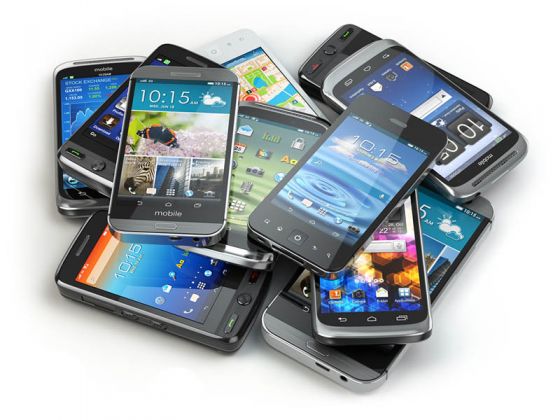So you’ve got a new smartphone, or you’re thinking about upgrading to a newer, shiner piece of tech. Splashing out on a cutting-edge device is a big purchase and one that often means your old phone is regulated to the bottom of the junk drawer – or worse, thrown in the bin.
With most Australians now upgrading their phone every two to three years, many of us are sitting on a pile of old devices that we’re unlikely to ever use again. So rather than contributing to Australia’s growing e-waste problem, why not recycle, reuse or even sell your now-unwanted smartphone?
If you’re one of the millions of Aussies with old devices, read on to find out where and how to recycle your mobile phone, plus other ways to reuse your device and keep it out of landfill.
On this page:
How do I prepare my old devices for recycling or reuse?
Before you send your phone off for recycling (or to sell or reuse), you’ll want to make sure all your personal info is erased. You’ll also want to ensure you’ve transferred or backed up data such as photos, messages or music, and removed your SIM card from the device. Here’s a quick checklist covering the basics.
- Backup your phone’s data to accounts such as iCloud and Google, or to your computer.
- Transfer your phone’s data to your new smartphone: most manufacturers allow you to this via cable, or through built-in switching assistants such as Samsung Smart Switch or the Move to iOS app for Apple.
- Log out of accounts used on your device, such as social media, banking, email, etc.
- Disconnect any external devices connected by Bluetooth, such as headphones. You can do this by opening Settings and unpairing each accessory.
- Remove your physical SIM card from your phone, as well as the micro SD card if applicable.
- Erase your data from the phone by performing a factory reset. iPhone users can find this in Settings > General > Transfer or Reset iPhone, while Android owners should go to Settings > General > Backup and Reset (this may vary between devices and operating systems).

How to recycle your phone via MobileMuster
MobileMuster is a government-accredited mobile phone recycling scheme, which is managed by the Australian Mobile Telecommunications Association (AMTA). Essentially, it’s the foremost service in Australia for keeping your unwanted devices out of landfill and is supported by AMTA members including Telstra, Optus, TPG/Vodafone, Apple, Samsung and Google.
The program accepts not only mobile devices, but also batteries, chargers and mobile accessories. Eligible items include:
- Mobile phones
- Tablets
- Batteries, chargers and accessories
- Modems and routers
- Landline phones
- Smart home tech (e.g. speakers, hubs)
- Wearables (e.g. smart watches and fitness trackers)
- Gaming tech (e.g. consoles, controllers)
- Cables
Is there a MobileMuster phone recycling drop-off near me?
Aussies can drop off unwanted tech at more than 3,000 drop-off locations across the country; you can find a complete list of drop-off locations by postcode on the MobileMuster website. MobileMuster donations are accepted at hundreds of participating retail stores, including Telstra, Optus, Vodafone and Officeworks and you’ll also find many city councils offer collection outlets.
You can also send your old phone directly to the program by requesting a free prepaid mailing satchel. Mailing satchels can be ordered online from MobileMuster and are also available to pick up from your nearest Australia Post or JB Hi-Fi store. Alternatively, you can use your own packaging and simply attach a MobileMuster prepaid return label, which is available to download from the program’s website.
What does MobileMuster do with my old devices?
MobileMuster partners with electronic waste recycling to recover as much of your old phone as possible and typically salvages more than 95% of each unwanted device. All mobile components are processed at facilities in Sydney, Melbourne or Brisbane, with each centre focused on minimising its environmental impact.
Once MobileMuster receives your device, it is dissembled into its main components – circuit boards, batteries, casing, screen, accessories and packaging. Each of these components is separately processed through techniques such as shredding, crushing and heating, to recover material including glass, aluminium, valuable metals, plastic and paper/cardboard. Each of these materials can then be recycled and used to make new products.
Looking for a SIM-only plan for your old phone? Compare prices below.
Here is a selection of postpaid plans from Canstar Blue’s database with a minimum of 20GB of data, listed in order of standard cost, lowest to highest, then by data allowance, largest to smallest. Try using our mobile phone plan comparison tool to see a wide range of plans from other providers. This table includes products with links to referral partners.
Here is a selection of prepaid plans from Canstar Blue’s database with a minimum of 10GB of data each month, listed in order of standard cost, lowest to highest, then by data allowance, largest to smallest. If you want to compare a larger range of offers from other providers, use our phone plan comparison tool. This table includes products with links to referral partners.
Trade in your smartphone
If you’re planning to upgrade to a brand new device, trading in your old handset can help save hundreds on the cost of a new phone. Telstra, Optus, and Vodafone each offer plan credit to customers who trade in eligible phones and manufacturers including Samsung and Apple also provide trade-in discounts to customers buying phones outright.
The trade-in value of your old phone will depend on the model and storage size, plus your phone’s general condition. The newer and more premium your device, the bigger your trade-in credit is likely to be; but amounts can vary between telcos and retailers, so you may want to shop around for quotes before deciding. Generally, the newest and priciest models can net you up to $900-$1,000 in trade-in credit, but keep an eye out for special deals: Telstra, Optus and Vodafone often run trade-in specials when new big-name smartphones hit the market.
If you’re considering trading up, here’s some estimated credit offered by Telstra, Optus and Vodafone for a range of popular phones in good working order. Prices are accurate as of June 2024, please check websites for up-to-date quotes.
| Telstra | Optus | Vodafone | |
|---|---|---|---|
| iPhone 14 Pro Max (512GB) | Up to $1,040 | Up to $860 | Up to $905 |
| iPhone 13 Pro Max (512GB) | Up to $790 | Up to $650 | Up to $685 |
| iPhone 12 Pro Max (512GB) | Up to $545 | Up to $460 | Up to $475 |
| iPhone 11 Pro Max (512GB) | Up to $400 | Up to $355 | Up to $340 |
| Samsung Galaxy S22 Ultra (512GB) | Up to $460 | Up to $390 | Up to $390 |
| Samsung Galaxy S21 Ultra (512GB) | Up to $325 | Up to $260 | Up to $285 |
| Samsung Galaxy S20 Ultra 5G (512GB) | Up to $265 | Up to $175 | Up to $195 |
| Google Pixel 6 Pro (512GB) | Up to $280 | Up to $200 | Up to $205 |
| Google Pixel 5 (128GB) | Up to $105 | Up to $65 | Up to $85 |
Source: Respective retailer websites. Accurate as of June 2024.
If you do opt to trade in, you’ll need to complete an online form assessing the condition of your unwanted device. Follow the instructions on how to send or drop-off your old phone, and just wait for your trade-in funds to arrive; if you’re trading in via your current telco, you’ll most likely receive the value as bill credit. However, you may also have the option of directing the funds to a credit card or bank account.
Samsung customers can trade in old phones when purchasing a new Galaxy device, with the trade-in value then applied to the cost of your new phone. Apple’s trade-in program also only applies to new purchases, although customers can opt for their trade-in credit to be received via an Apple Gift Card.
Hand your phone down (or to a good cause)
If your phone is still in good working order, passing it on to a friend or family member is a great way to extend its use. According to Mobile Muster, 72% of children receive their first smartphones as a hand-me-down from parents – a move that’s good for the environment and your wallet.
Keep in mind that even if your child is too young for a working smartphone, you can also convert your old handset into a portable gaming device or MP3 player – no SIM card or phone plan needed. Simply load your phone up with kid-friendly games and apps (or your favourite tunes) and connect it to your home’s WiFi.
If you don’t have family or friends in need of a second-hand phone, you may want to consider donating your device to a good cause. MobileMuster partners with several charities to redistribute working, but unwanted, phones to Australians in need, including The Reconnect Project, DV Safe Phone, and GIVIT. All of these organisations help provide support and connection to vulnerable Australians, including people experiencing family violence, refugees, at-risk youth and families living in financial hardship.
Sell your old phone
Finally, you may be able to nab a few bucks for your old phone by selling it online. There’s multiple Aussie websites that deal exclusively in old phones – such as Mobile Guru or Mobile Monster – but as with a telco or manufacturer trade-in, what you’ll get back will vary.
Newer phones in better condition will net you the biggest payday; for example, the iPhone 14 Pro Max is valued at up to $1,640, the Samsung Galaxy S22 Ultra at up to $610, and the Google Pixel 7 Pro at up to $730. But this will depend on the condition of your phone, as well as storage size. The good news is that even faulty or unworking phones can be sold through these platforms, although the value will be drastically reduced.


Share this article